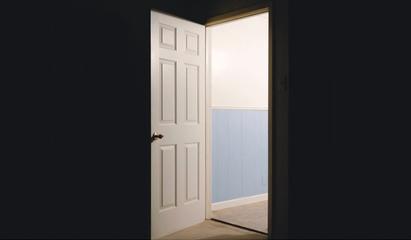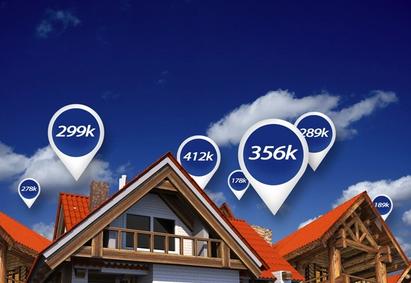Your Down Payment Explained
Written by:
Andrew Tavin
Andrew Tavin
Personal Finance Writer
Andrew Tavin a contributing writer for Own Up.
See full bio
Fact Checked by:
Dan Silva
Dan is the Vice President of Marketplace Lending at Own Up. Throughout his career, he has held executive leadership positions in the mortgage and banking industry.
See full bio

Fast Links
Imagine for a moment that you’re a first-time homebuyer. You may not have to imagine that hard. Before you even start looking for your new home, you’ll want to make sure you can afford the cost of a mortgage loan and determine the best mortgage for your situation. While the ongoing monthly payments will have the biggest impact on your finances going forward, you’ll need to take care of the down payment before you even get to that point.
What Is A Mortgage Down Payment?
The down payment is a percentage of the home’s purchase price that must be paid during the closing. While you may have heard that a 20% down payment is standard, there are a range of options to consider based on your personal finances, choice of mortgage lenders, and the type of loan you’re considering.
A down payment can equate to a significant portion of the loan amount. It could easily be tens of thousands of dollars – or more – depending on the sale price of the home you want to buy, the amount of money you are able to put forward, and any down payment assistance you may be eligible to receive.
As a result, prospective homebuyers may need significant savings to afford their down payment as well as the affiliated closing costs, such as inspection fees, appraisal fees, loan processing costs, and more.
In some situations, a buyer may have to pay nearly a quarter of the purchase price by the end of the home-buying process, taking into account the down payment and closing costs.
How Are Mortgage Down Payment Requirements Determined?
There are multiple factors that determine a homebuyer’s down payment amount, including the borrower’s financial situation, the lender’s requirements, and the type of mortgage.
Some borrowers may choose to pay more than the minimum down payment. A larger upfront down payment could translate to lower monthly mortgage payments across the life of the loan, making it an appealing option for borrowers who may not have the best credit score or debt-to-income ratio but have a significant amount of cash on hand.
Even if a lender is offering a lower interest rate, a large down payment could also be a good option to help you lock in lower monthly payments so you can spend less money in total on interest.
Is A 20% Down Payment Required To Purchase A Home?
No. Despite what you may have heard, a 20% down payment is not a hard requirement for a mortgage. That confusion likely comes from the Private Mortgage Insurance, or PMI, requirement.
For a conventional loan, which is a loan without government backing, lenders will require borrowers to secure mortgage insurance if they aren’t able or willing to make a 20% down payment. This insurance protects the lender in the event of a loan default.
The premiums for the insurance tend to be rolled into the monthly mortgage payments. While different factors will determine the monthly amount you owe on PMI, you could be looking at hundreds of dollars per month. It may be less, depending on your loan situation, but a mortgage calculator or mortgage advisor can help you figure it out.
There are also options where the lender will pay the mortgage insurance premium on behalf of the borrower; however, this will likely result in a higher interest rate on the loan.
There are circumstances in which you may be able to eventually drop your PMI payments. Your mortgage advisor or lender can help walk you through your options.
What Types Of Mortgages Allow For A Low Down Payment?
There are multiple government-backed loan programs that offer better terms and lower down payment options than conventional mortgages, though each one comes with its own eligibility requirements. If you fit the requirements for an FHA loan, VA loan, or USDA home loan, you may be able to minimize your down payment or avoid one entirely.
Let’s review some of the more common types of loans that require a down payment lower than 20%.
Federal Housing Administration Loans
Down payments for loans guaranteed by the Federal Housing Administration can be as low as 3.5%. They’re intended for first-time buyers and those with lower incomes. The definition of first-time homebuyer includes someone who has not owned a home for at least a three-year period, a single person who previously owned a home with a spouse, and a person who previously owned a mobile home. FHA loans are intended for primary residences, not investment properties.
FHA mortgage loans don’t require PMI, but they do require an up-front mortgage insurance premium and a mortgage insurance premium (MIP) to be paid instead. Depending on the terms and conditions of your home loan, most FHA loans today will require MIP for either 11 years or the lifetime of the mortgage.
Veterans Affairs loans
The Department of Veterans Affairs has programs that allow veterans and active service members to access mortgages with little or even no down payment. If you think you meet the VA’s eligibility requirements, then this could be the most affordable opinion available.
U.S. Department of Agriculture Loans
USDA loans are for people buying a house in rural areas. They have an income limit and require no down payment. Since rural borrowers may have fewer loan options this can be a valuable resource.
HomeReady loans
HomeReady loans from Freddie Mac and Fannie Mae are for low- and moderate-income families making less than 80% of the area median income. The down payment is as low as 3% and reduced mortgage insurance is possible with 10% down.
Local Governments
Some states and municipalities also offer closing-cost and down payment assistance programs. Check with your local government or mortgage officer to see which programs may be applicable to you. A little bit of research might save you a lot of money.
What Is The Typical Mortgage Down Payment?
According to data from ATTOM, the median down payment for a mortgage on a single family condo rose from $26,450 in the first quarter of 2023 to $31,500 in the second quarter. It’s possible that borrowers may be choosing to put down more money upfront while mortgage rates are higher to avoid locking in high monthly payments for the next couple decades of their life.
You can use a mortgage calculator like Own Up’s Rate Range Finder to estimate how different down payments, loan terms, and home values will affect your total payment.
How Can You Determine Your Down Payment Amount?
Determining how much to put down at the start of your mortgage is, more or less, a process of balancing your current financial situation with your expectation of your future financial situation. Certain government-backed mortgages may offer both lower down payments and lower monthly payments than conventional mortgages, which generally require a trade off between a lower down payment and higher monthly payments or a higher down payment and lower monthly payments.
The Bottom Line
Every financial situation and real estate market is different, so you should ultimately speak to a mortgage advisor or general financial advisor to help determine the down payment amount that’s right for you.
It may also be worth waiting until you’ve accumulated more savings, more income, or a better credit score before becoming a homeowner. While it may be disappointing to put off homeownership, it’s a big decision that will impact your finances for many years to come. You’ll be much happier in the long run if you’re sure the timing and the down payment are right for you.


